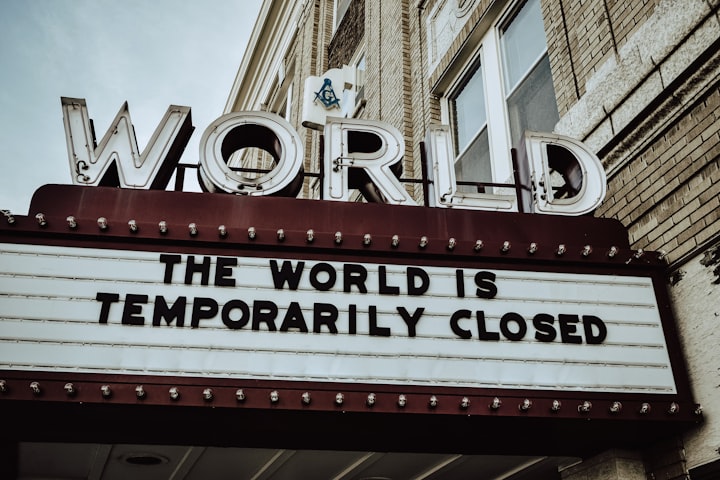History of 1918 Flu Pandemic
also known as the Spanish flu

The 1918 flu pandemic, also known as the Spanish flu, was one of the deadliest pandemics in human history, infecting an estimated 500 million people worldwide, and killing at least 50 million. It occurred during a time of war, and the movement of troops and crowded conditions likely contributed to the rapid spread of the virus.
The pandemic began in the spring of 1918, with outbreaks occurring in military camps in Europe and the United States. The virus quickly spread across the globe, reaching every continent within months. It was called the Spanish flu because Spain was one of the few countries that openly reported on the outbreak, while other countries, including the United States, censored news about the pandemic to avoid damaging morale during wartime.
The virus was highly contagious and caused severe respiratory symptoms, including coughing, fever, and difficulty breathing. In some cases, patients developed pneumonia, which could be fatal. The virus was especially deadly for young adults, unlike the seasonal flu, which typically affects the very young and very old. This is because the Spanish flu triggered a cytokine storm, an overreaction of the immune system that can cause severe tissue damage.
Public health officials were initially slow to respond to the pandemic, as they focused their efforts on the war effort. However, as the virus spread and the death toll rose, governments began to take more aggressive measures to contain the outbreak. Cities around the world implemented quarantine measures, closed schools, and canceled public gatherings.
In some cases, these measures were successful in slowing the spread of the virus. For example, in St. Louis, Missouri, the city implemented strict social distancing measures, including closing schools and banning public gatherings. As a result, the city had a much lower death rate than Philadelphia, which had a similar population but implemented fewer social distancing measures.
Despite these efforts, the virus continued to spread, and the death toll continued to rise. In many areas, hospitals were overwhelmed, and patients were forced to be treated in makeshift facilities, including schools and churches. Some communities even resorted to using ice rinks and warehouses to house patients.
The pandemic finally began to subside in the summer of 1919, after infecting millions of people and killing millions more. In its wake, it left behind devastated communities and shattered families. The Spanish flu was a sobering reminder of the power of infectious diseases and the need for strong public health systems.
In the years following the pandemic, scientists and public health officials worked to better understand the virus and prevent future outbreaks. They developed vaccines and other interventions to reduce the spread of the flu and other infectious diseases.
Today, the world is facing another pandemic, the COVID-19 pandemic, which has infected millions of people and killed hundreds of thousands. Like the Spanish flu, COVID-19 has highlighted the need for strong public health systems and effective interventions to control the spread of infectious diseases.
In conclusion, the 1918 flu pandemic was one of the deadliest pandemics in human history, killing millions of people worldwide. Its rapid spread and deadly effects were exacerbated by the conditions of war and the movement of troops. The pandemic ultimately led to the development of new public health strategies and interventions, which have helped to prevent and control future outbreaks of infectious diseases. Today, we continue to learn from the lessons of the Spanish flu and work to prevent and control the spread of infectious diseases around the world.
The 1918 flu pandemic was caused by the H1N1 influenza virus, which was a novel strain of the flu. Unlike seasonal flu viruses, which usually affect the very young and the elderly, the H1N1 virus of 1918 had a higher mortality rate among young adults, which was unusual and made the pandemic particularly deadly.
The pandemic occurred during a time of war, which made it difficult for public health officials to control the spread of the virus. The movement of troops and the crowded conditions in military camps likely contributed to the rapid spread of the virus, as soldiers were often living in close quarters and traveling long distances.
The pandemic had a significant impact on global economies, as businesses were forced to close and people were unable to work due to illness or quarantine measures. The pandemic also had a major impact on the healthcare system, as hospitals were overwhelmed with patients and many healthcare workers themselves became ill.
There was no cure for the flu at the time, and antibiotics were not yet available to treat secondary bacterial infections. Instead, public health officials relied on non-pharmaceutical interventions such as social distancing measures, quarantine, and the use of masks to control the spread of the virus.
The pandemic had a profound impact on society, leading to a sense of fear and uncertainty. Some communities experienced social unrest, as people became frustrated with the quarantine measures and the lack of information about the virus. However, the pandemic also brought communities together, as people worked to care for the sick and support each other during difficult times.
In the years following the pandemic, researchers continued to study the virus and its impact on global health. Scientists eventually developed a vaccine for the flu, which has helped to prevent future outbreaks of the disease. However, the 1918 flu pandemic remains one of the deadliest pandemics in history and a reminder of the devastating impact that infectious diseases can have on society.
About the Creator
Muhammad Abrar
Muhammad Abrar is a passionate writer and storyteller with a love for words and a talent for crafting engaging and compelling content. With a background in [related field or experience],






Comments
There are no comments for this story
Be the first to respond and start the conversation.